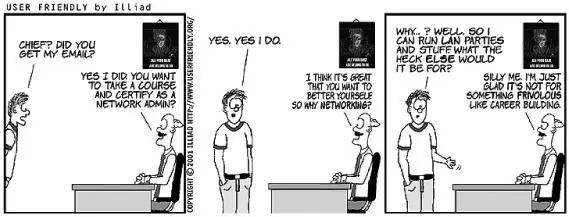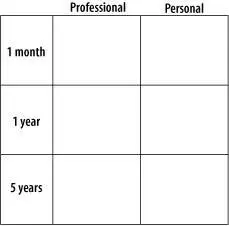Thomas Limoncelli - Time Management for System Administrators
Здесь есть возможность читать онлайн «Thomas Limoncelli - Time Management for System Administrators» весь текст электронной книги совершенно бесплатно (целиком полную версию без сокращений). В некоторых случаях можно слушать аудио, скачать через торрент в формате fb2 и присутствует краткое содержание. Жанр: Старинная литература, на английском языке. Описание произведения, (предисловие) а так же отзывы посетителей доступны на портале библиотеки ЛибКат.
- Название:Time Management for System Administrators
- Автор:
- Жанр:
- Год:неизвестен
- ISBN:нет данных
- Рейтинг книги:4 / 5. Голосов: 1
-
Избранное:Добавить в избранное
- Отзывы:
-
Ваша оценка:
- 80
- 1
- 2
- 3
- 4
- 5
Time Management for System Administrators: краткое содержание, описание и аннотация
Предлагаем к чтению аннотацию, описание, краткое содержание или предисловие (зависит от того, что написал сам автор книги «Time Management for System Administrators»). Если вы не нашли необходимую информацию о книге — напишите в комментариях, мы постараемся отыскать её.
Time Management for System Administrators — читать онлайн бесплатно полную книгу (весь текст) целиком
Ниже представлен текст книги, разбитый по страницам. Система сохранения места последней прочитанной страницы, позволяет с удобством читать онлайн бесплатно книгу «Time Management for System Administrators», без необходимости каждый раз заново искать на чём Вы остановились. Поставьте закладку, и сможете в любой момент перейти на страницу, на которой закончили чтение.
Интервал:
Закладка:
What do I want my life to be like when I retire?
The technique here is very simple. You're going to figure out your goals, prioritize them, then work out the steps that will help you reach those goals. Then, you'll turn those steps into to do items and sprinkle them throughout your calendar.
Maybe this is all coming too fast. You're drowning in an endless sea of time management troubles. That's OK. Skim this chapter now, and reread this chapter when you feel you've graduated from the basics.

Figure 7-1.
The Secret Trick
The big secret is to write down your goals. When they are in your head, they aren't as fleshed out as you think they are. They are nebulous. They can't be evaluated, shared with others, or worked on.
The process of writing them down forces you to make them concrete. It's also a lot easier to prioritize a list that is written down.
Written goals can be shared with others. If you have a significant other, you can share your goals with him or her and discuss them. We forget that our loved ones aren't mindreaders. By sharing our goals, we get support and a reality check. We are more likely to achieve a goal if we have told others about it. There's something about telling someone our goals that motivates us to act on them.
It is easy to accidentally write vague goals. You can make a goal significantly more concrete by answering these questions in each goal statement:
What do I want to achieve?
When do I want to have achieved it?
Everyone forgets the when. It's easy to never begin if you don't set a deadline. In the chapter opening, I was careful to include a specific deadline for each goal.
It is also important that goals are measurable. The goals in the chapter opening were mostly measurable. "Living comfortably" could be more specific: a retirement income of 70 percent my current income. Learning "more" about Linux kernel internals isn't measurable. I can fix that by adding a milestone to be achieved, like writing a simple device driver.
Tip
There are other people you might want to consult when setting goals. Your family, religious leaders, boss, neighbors, close friends, and so on. Each person reading this book has a different list of who she thinks is appropriate to consult with. Who is on your list?
In preparation for writing down your goals, take a moment to think about your values . What do you see as your personal mission? Do you believe in helping others or letting others help themselves? Do you want to be rich or happy (or can both be achieved)? Do you value independence or cooperation? Do you value community or self-interest?
Your work-life and home-life values may differ. At home, you may be the nurturing parent, loving all your children equally and helping them to succeed. At work, things may be more competitive or role-oriented.
Setting Goals
How to Get Control of Your Time and Your Life (Signet) is a classic book on time management. The book brings out the necessity of listing your short-, medium-, and long-term goals, and encourages you to categorize them into A, B, and C priorities, with A being the highest priority.
Let's do just that.
Take a big sheet of paper and divide it into six sections, as shown in Figure 7-1 (people with lots of goals or large handwriting might want to use multiple sheets of paper).

Figure 7-1. Goal planning sheet
You're going to fill in each box with a list of life goals in that category. You can add additional timeframes if you feel your goals are grouped differently.
Now spend some time listing your goals. To help you get started, here are some guidelines:
1 month
Typically these are the smaller projects on your mind. Completing projects that have started, replacing a piece of equipment, and so on. 1 year
These are the bigger projects. Often they include various reorganizations you'd like to make, both technical ("replace current directory service with a single-sign-on system") or organizational ("reorganize group into customer-focused teams"). 5 year
These are the biggest projects, often including life-changing goals such as career moves ("get an MBA and move into management") or life changes ("get married").
Don't worry about their order or whether your goals are good enough for anyone else to see. Just list them. I'll wait.
Really. I'll wait. Don't continue to the next paragraph until you've completed your chart. Not in your head, but on real paper.
You didn't list them did you? You figured you'd come back to this chapter some other time and fill out the table. All the exercises in this book have one thing in common: they don't work unless you do them. So now pull out a sheet of paper and start writing!
I'll wait....
Really....
Are you back? Good.
Now go back and make sure each goal is measurable. Could another person examine the situation and determine that the goal has been met? Can you use numbers or tangible results as evidence of completion? Review your list now and make sure. Again, I'll wait.
Next, for each goal, work out which are As, which are Bs, and which are Cs. As you absolutely must do, Bs are the next most important, and Cs are the good ideas or "would be nice" items that are low priority. This is similar to the priority scheme used in Chapter 4.
Go mark them now. I can't stress enough the importance of doing these exercises as you come across them.
That wasn't as easy as you thought, was it? Did you want to mark everything with an A? I know I did. Prioritization can take as long as, or longer, than writing the initial list.
Tip
You might also want to write "lifetime goals," such as where you want to be when you retire (both geographically and financially). Due to the way compound interest boosts investments, the sooner you start your financial planning, the better.
Planning Your Next Steps
To achieve these goals, you must determine the steps required to get there. You need to break down each goal into the specific tasks that you can write on your to do list. You might want to do this in a word processor so that you can cut and paste into your PDA or print the list and hole-punch it so that it fits in your PAA.
If you aren't sure of the steps, write what you can think of or write down "Research how to do this" and some ideas of where to do the research.
Don't worry about writing the steps in chronological order. Sometimes we have to work backward. You ask yourself, "How would I get there?" and write that step, and then ask yourself, "But how would I have gotten there ?" and write the step necessary to do that. Eventually, you work backward through the process until you have all the steps you need.
As an example, I'll write my next steps for the goals listed in the beginning of this chapter:
At 60, I want to retire and have the financial means to live comfortably.
Make an appointment with a financial planner.
Implement the retirement plan suggested by the planner.
Research retirement communities. (How much do they cost? Do they have payment plans? What amenities should I expect?)
Research insurance for long-term care facilities or other options in case of Alzheimer's or other situations.
Within the next three years, I want to get promoted to team leader of my group.
Make an appointment with my boss to talk about career goals.
Читать дальшеИнтервал:
Закладка:
Похожие книги на «Time Management for System Administrators»
Представляем Вашему вниманию похожие книги на «Time Management for System Administrators» списком для выбора. Мы отобрали схожую по названию и смыслу литературу в надежде предоставить читателям больше вариантов отыскать новые, интересные, ещё непрочитанные произведения.
Обсуждение, отзывы о книге «Time Management for System Administrators» и просто собственные мнения читателей. Оставьте ваши комментарии, напишите, что Вы думаете о произведении, его смысле или главных героях. Укажите что конкретно понравилось, а что нет, и почему Вы так считаете.












